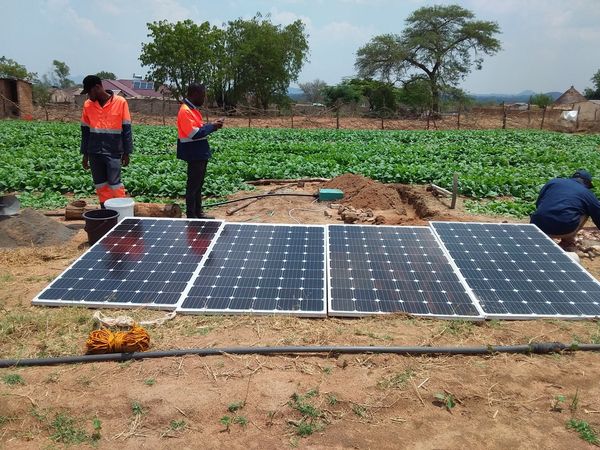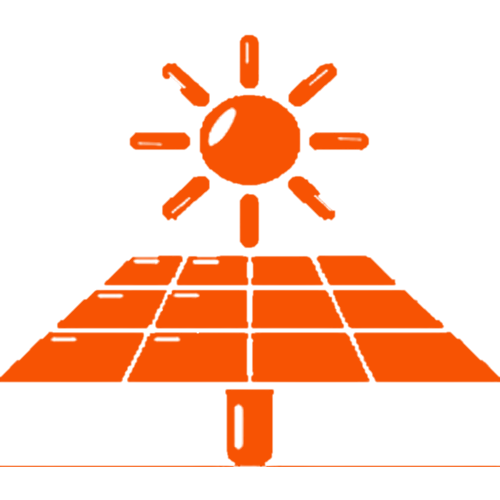Most of our clients frequently ask about the mixing of solar panels of different voltages, wattages, and brands, manufactured by different companies. We are addressing this question so that you can understand your options when it comes to installing different solar panels.
Though mixing different solar panels is not recommended, it’s not forbidden and things would be okay as long as each panel’s electrical parameters (voltage, wattage, amps) are carefully considered.
When you intend to wire two panels produced by different brands, the brands are actually not the problem. The problem is in different electrical characteristics of the panels, together with different performance degradation. It is not usually advised, because mixing different wattage panels reduces the efficiency and power output.
You can mix solar panels that have different wattages, but to mix different wattage solar panels, it’s crucial that you first understand the correct way to do it.

How to connect your solar panels depends on:
- The type of solar panel system,
- The solar power you want to generate,
- The other system components, such as a charge controller, battery, and inverter.
There are two main types of connecting solar panels – in series or in parallel. You connect solar panels in series when you want to get a higher voltage. If mixed-wattage solar panels are connected in series, the total voltages are added. However, the amps are reduced to the current of the lowest panel.
Hauler Engineering has vast knowledge in the installation of solar panels using both series and parallel connections depending on the type of system you have to generate maximum solar energy.
If you, however, need to get a higher current, you should connect your panels in parallel. if mixed-wattage solar panels are connected in parallel, the total amps are added, but the voltage of the system reduces to the voltage of the lowest panel.
Should you need both a higher voltage and a higher current, you have to apply both connection modes, which means that a part of your solar panels should be wired in series, while the remaining ones are to be wired in parallel.
The most important to remember is that both connection modes provide you with a higher wattage.
When connecting different solar modules, it’s not the different wattage, it’s actually the current (for series connection) and voltage (for parallel connection) that could drag down the performance of the solar array composed of those modules.
Therefore, if the power output of a solar panel cannot alone meet your daily electricity needs, you should think of adding more such panels to it, whether in series or in parallel.
To get the maximum efficient solar panel system, however, you should keep some basic principles related to connecting solar panels.
WIRING DIFFERENT SOLAR PANELS IN SERIES
Connecting in series means joining the positive terminal of a solar panel to the negative terminal of the next solar panel until eventually you are left with one free positive and one free negative terminal of the array, which are to be connected to the input either of the inverter (in case of a grid-tied system without a battery backup) or the charge controller (in case of a grid-tied system with a battery backup or off-grid solar panel system)
When mixing different solar panels, only solar panels of exact or similar current should be wired together in series. When you connect a 3A panel to a 3.5A panel, the overall current will be dragged down to 3A. Such a reduction in current will by all means lead to a reduction in power output and therefore loss in system performance.
Wattage is not a significant concern. When you wire together a 60W panel to a 100W panel in series, the total connected power would be 160W, provided that the two panels are of equal current things, however, are entirely different if you connect in a series of panels of different current ratings.
Here any difference in voltages is not important, voltages just sum up and all you’ve got to consider is that the total voltage should fall within the inverter voltage window.
If their current ratings are different however, you should be prepared to expect unpleasant surprises, since the overall current would be the lower of the two, which will mean that you’re not going to obtain a total of 160W but always less. How much less – depends on the difference in rated currents
WIRING SOLAR PANELS OF DIFFERENT RATINGS IN PARALLEL
Similarly, only solar panels of exact or similar voltage should be wired together in parallel. When you connect a 15V panel to a 24 V panel, the overall voltage will be dragged down to 15 Volts. Such a reduction in voltage will lead to a reduction in power output and therefore loss in system performance.
Furthermore, when you wire together a 60W panel to a 100W panel in parallel, the total connected power would be 160W, provided that the two panels are of equal voltage. Here any difference in currents is not important, currents just sum up and all you’ve got to consider is that the total current should not exceed the maximum inverter input current.
If their voltage ratings are different however, you should be prepared to expect unpleasant surprises, since the overall voltage would be the lower of the two, which will mean that you’re not going to obtain a total of 160W but always less.
How much less – depends on the difference in rated voltages.
WHY IT IS NOT RECOMMENDED TO CONNECT DIFFERENT PANELS?

- Apart from rated power, each panel has a power degradation percentage.
This means solar panels’ output degrades in a different way over time.
Moreover, the stated degradation does not always coincide with what is written on a panel’s nameplate. Therefore it’s not easy to find an exact panel match for different solar brands. ‘Exact match’ means both almost similar ratings and ratings degradation. - For panels connected in series, voltage is additive while current is the same, provided however that all the panels have equal current rating.
If among the panels connected in series, there is a panel with a rated current lower than the others, it will drag down the current passing through all the remaining panels.
Therefore each of the remaining panels (with a higher current rating) will underperform which means that will produce a lower current (and power) than stated on its nameplate.
In other words, if two dissimilar modules are wired in series, the voltage is still additive, but the current will be equal to the current produced by the panel with the lowest current output in the series string. - For panels connected in parallel, current is additive while voltage is the same. If among the panels connected in parallel, there is a panel with a rated voltage lower than the others, it will drag down the voltage on all the remaining panels. Therefore each of the remaining panels (with a higher current rating) will underperform which means that will produce a lower voltage (and power) than stated on its nameplate.
- Mixing solar panels with different electrical characteristics is not recommended if you use an MPPT charge controller. Different wattages make it impossible for the controller to find the optimal operating voltage and current since they are different for each panel type.
The solution is simple: utilize panels that have similar electrical characteristics to the original panels.
Therefore, when connecting different solar panels, to minimize the losses:
- Connect only in series panels of the same brand and of the same current
- Connect only in series panels of the different brands and of the same current is your second option if for whatever reason you cannot find the same brand panels
- Connect in parallel panels of the same brand and of the same voltage
- Connect in parallel panels of different brands and of the same voltage-this is your second option if for whatever reason you cannot find the same brand panels
- Connecting different solar panels with the same array is not recommended since either the voltage or the current might be reduced. Therefore if you are planning to use dissimilar panels, try to pick the ones with similar voltage and current

